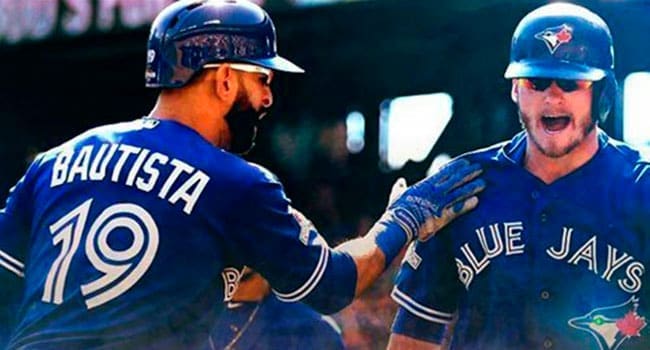 Last spring, Rogers Communications had a big problem. In the first year of its massive new National Hockey League deal, not one Canadian team made the playoffs. Television and online ratings tanked, fans tuned out, and sponsors had to be massaged. Lots of people lost their jobs.
Last spring, Rogers Communications had a big problem. In the first year of its massive new National Hockey League deal, not one Canadian team made the playoffs. Television and online ratings tanked, fans tuned out, and sponsors had to be massaged. Lots of people lost their jobs.
It was the worst possible start for the communications giant, which had wagered the family jewels on the NHL reaping a bounty from the tech revolution.
Rogers was partially bailed out by the Toronto Blue Jays, their baseball property. While the team wasn’t able to replicate their magic 2015 come-from-behind season, the team still managed to make it back to the post-season. Fans again tuned in by the millions night after night.
This spring, sanity returned on the NHL scene. Five Canadian teams made the post-season. The plucky Ottawa Senators took future Stanley Cup winners Pittsburgh to seven games in the Eastern Conference Final. Ratings in Canada for the NHL playoffs resumed their typical strength and, augmented by new tech platforms, gave a suggestion of what the contract could deliver to Rogers.
The Blue Jays, on the other hand, don’t seem likely to repeat the post-season berths of 2015 and 2016. They sit just below the .500 mark, a mediocre perch they’ve occupied for much of the first half of 2017. The loss of slugger Edwin Encarnacion, a deluge of injuries to stars and the team’s perpetual inability to score runs without a home run have left the team three games under .500 after their win in Kansas City on Sunday.
Then this weekend came the news that the brilliant young closer, Roberto Osuna, was dealing with emotional problems, causing him to miss game action. Although he pitched on Sunday, there’s no assurance of his return to full health. His loss for any sustained time would be crippling.
At 36-39, the team is not eliminated from post-season consideration with 87 regular-season games still to play. But the discussion is now underway: Sell or stay the course with this lineup? The team has some expensive contracts and missing post-season revenues is not the way to pay them.
The Blue Jays are an unlikely blend for a team that wants to contend for years, both too old and too young in their key parts. There are young franchise pitchers in Osuna, Aaron Sanchez and Marcus Stroman; anyone would be happy to build around them. But that’s about all for youth in the everyday lineup. The Jays’ farm system is likewise lean on dynamic prospects.
Because management decided to go all-in for 2015, the Jays’ payroll is now burdened by expensive veteran players who’ve started to break down. After jettisoning Encarnacion during the winter, the Jays still feature 30-year-old-plus players such as José Bautista, Troy Tulowitzki, Russell Martin, Kendrys Morales, Josh Donaldson, Steve Pearce, Justin Smoak, Marco Estrada, Francisco Liriano, J.A. Happ and 40-year-old Jason Grilli.
All but Morales and Smoak have missed time this season with injuries.
Toronto must make contract decisions on Donaldson, Kevin Pillar, Estrada, Stroman, Sanchez and Liriano by the end of the season. Tulowitzki, Martin, Smoak and Morales are under contracts. Bautista and the Jays have a mutual option on next year’s deal. There isn’t much wiggle room for change unless one or more of the old guys with big contracts are moved soon.
So if the Jays are moving into an uncertain future with no post-season spot, who goes? And does Toronto wait until just before the July 31 trade deadline to make that determination?
The biggest consideration could be whether the Jays need to more proactive, because other teams look like they may flood the market by tossing in the towel early. The Detroit Tigers, for instance, have decided they will make just about anyone on their roster available as they languish in last place in the Central, eight games under .500. That could mean J.D. Martinez, Ian Kinsler, Justin Wilson, Anibal Sanchez, Victor Martinez and even Justin Verlander in the mix.
The Jays don’t want to get to the deadline and find that the market for veteran players has already been addressed by, among others, the Tigers, Mets, Cardinals and Giants dumping their salary casualties into a saturated market. Donaldson is the most expensive asset the Jays must deal with and he would bring a tidy haul of players were he dealt. Plus, he’d free up money to sign the few young players the Jays don’t want to lose.
But for all their misery so far, the Jays still have an outside shot at a wild card. Maybe they can pluck a few dead-end contracts (Kinsler to play second?) for a closing spurt.
But a playoff spot would do nothing to address the systemic problems this team faces in the next few years. Only adding younger assets will do that.
It’s better to admit reality and suffer for a few months than deny the failure to produce enough everyday players and go into another prolonged drought.
Troy Media columnist Bruce Dowbiggin career includes successful stints in television, radio and print. A two-time winner of the Gemini Award as Canada’s top television sports broadcaster, he is also the publisher of Not The Public Broadcaster.
The views, opinions and positions expressed by columnists and contributors are the author’s alone. They do not inherently or expressly reflect the views, opinions and/or positions of our publication.

